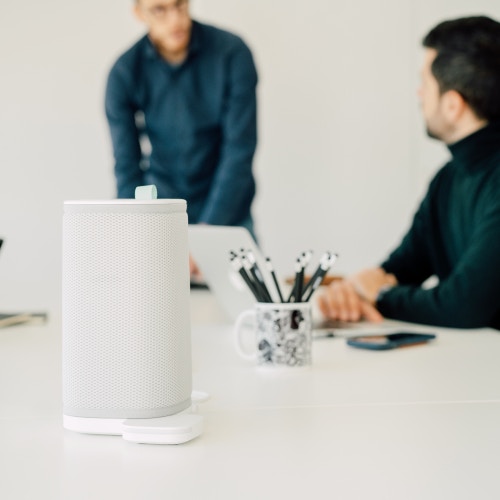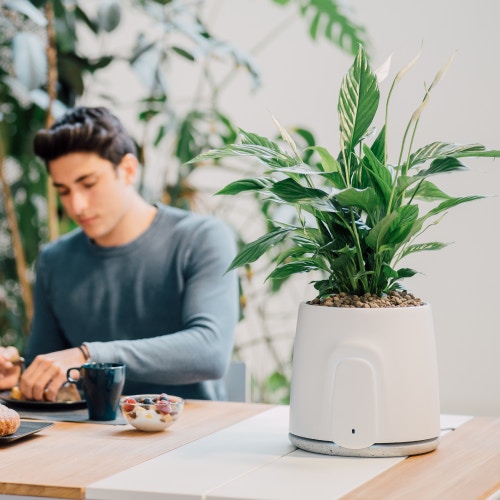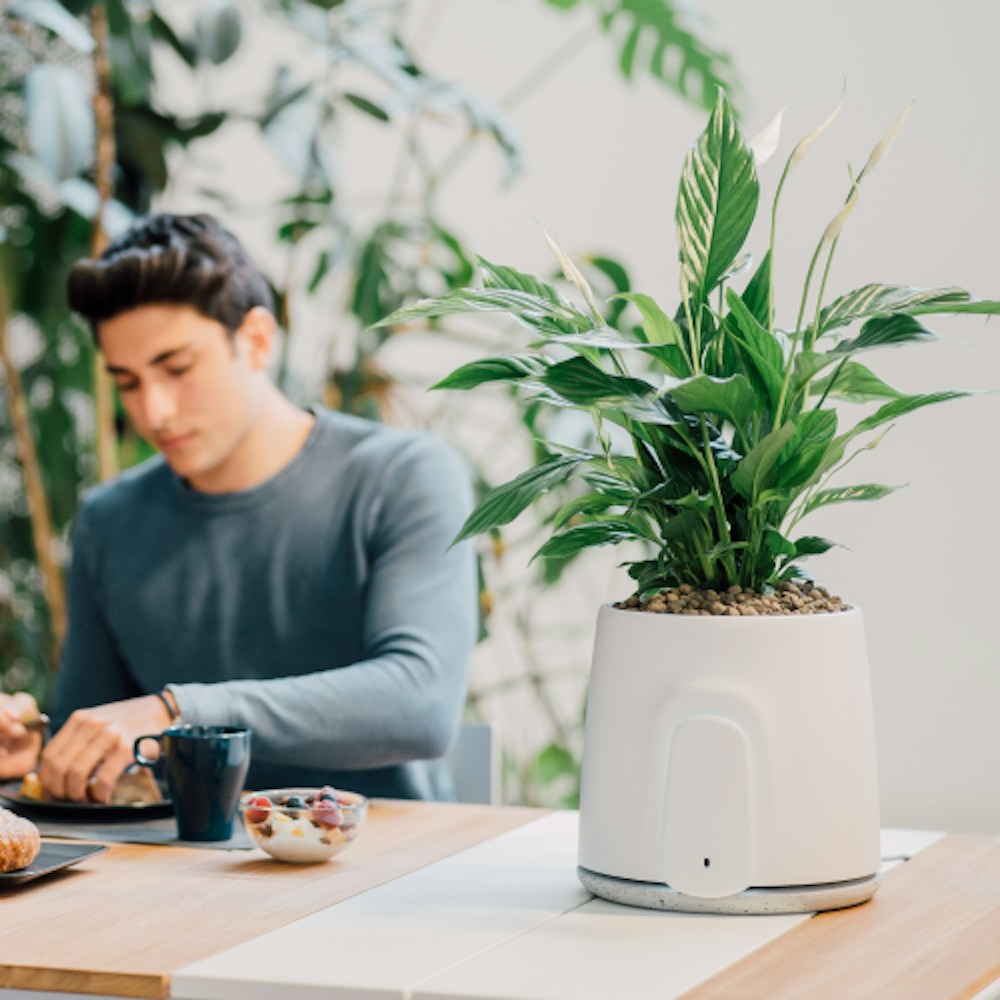
Indoor air pollution: one of the top environmental risks
→
Knowing the risks that arise from indoor pollution is essential for our health.
The problem of indoor pollution
Interventions by institutions against indoor pollution
What are indoor pollutants and what are their effects?
- Viruses and Bacteria
- Volatile Organic Compounds
- Fine Powders
- CO and CO2
- Nitrogen oxides
- Cigarette and fuel fumes
How to fight indoor pollution?
- Air the house
- Keep fireplaces or wood stoves ventilated
- Do not smoke inside your home
- Use an air purifier
Air purifier: how does it work and what is it for?
Natede Smart: the natural air purifier
- NASA research
Natede Smart: much more than an air purifier
The problem of indoor pollution
When we talk about air pollution, we always think of the problems concerning the poor quality of outdoor air in cities due to smog, traffic and factory exhaust.
This is obviously a big problem that we all know and that we see every day with the advent of important climate and meteorological changes.
But there is another problem, often underestimated and not sufficiently known: indoor air pollution.
This is the assessment of the level of healthiness of the air in the internal spaces where on average it is estimated that we spend almost 90% of our days.
Unfortunately, however, the time we spend inside these enclosed spaces may not be as safe as we think. Especially for children who spend most of their time indoors, the pollutants present in the indoor air can represent a problem for respiratory health in pediatric age.
In fact, according to a study by the World Health Organization, indoor air can be up to 5 times more polluted than the outdoor one.

This derives from the fact that internal pollutants are much more numerous than one might suspect: in fact their sources and causes are numerous and for the most part invisible.
And several of these pollutants can have really heavy repercussions on our organism in the long term, thus leading us to develop negative effects and in some cases even persistent pathologies.
Interventions by institutions against indoor air pollution
The emergence of these evidences and the connected discussions on the social and economic costs of the pathology attributable to indoor pollution have promoted various researches on health risk, positions taken by national and international agencies and the birth of a real scientific sector. multidisciplinary, with dedicated international associations, scientific journals and international conferences with thousands of participants.
A significant contribution to this scientific development was provided by the World Health Organization which between 1979 and 1990 organized various working groups and published a series of reports on the health risk caused by indoor exposure to various pollutants, recalling the focus on combustion products, biological agents and organic compounds released from furniture and carpets in indoor environments.
The main topics of interest for indoor pollution concern passive smoking, volatile organic compounds and related pathologies among which pulmonary hypersensitivity, allergic diseases, and irritative and sensory disorders including sick building syndrome and multiple chemical sensitization.

What are indoor pollutants and what are their effects?
There are different types of pollutants in our indoor environments, and it is good to know them to know their origin and to be able to recognize the symptoms in time in order to make the environment safe as soon as possible.
Viruses and Bacteria
Viruses and bacteria are certainly among the most insidious and most worrying factors for our body. Invisible enemies that are very difficult to eliminate and that proliferate quickly if the right precautions are not taken.
The main effects of these two pollutants can be traced back to an irritation and inflammation of the upper and lower respiratory tract and a sensitization for those suffering from allergic diseases (such as asthma or rhinoconjunctivitis).
Volatile Organic Compounds
Volatile organic compounds, also called VOCs, are among the major polluting particles present within our internal environments and have the ability to bind to nitrogen oxides to form ozone, an element that is harmful to our respiratory system. Some VOCs can be: formaldehyde, toluene, xylene or terpene.
Fine Particulate
Fine particles are among the most dangerous pollutants, because the small size ones can overcome the protective barriers of our lungs and end up directly in the bloodstream, triggering various pathologies in our body. The smaller they are, the more dangerous they are for our body, decreasing our lung capacity, increasing respiratory symptoms and causing asthma attacks and respiratory crises in the most severe cases.
CO and CO2
Carbon monoxide and carbon dioxide are two gases with a similar composition but which have two completely different effects.
Of the two, the most dangerous is certainly CO, because if present in high concentrations, it can lead to intoxication, fainting and respiratory crises.
While carbon dioxide creates a kind of greenhouse effect, making the air stagnant (a perfect environment for the proliferation of pollutants).
Nitrogen oxides
They are irritating gases that can produce lung inflammation and worsening of asthma or allergic episodes in predisposed subjects.
The danger of nitrogen oxides in closed environments is mainly due to their ability to oxidize in the indoor air and thus become nitric acid, which is the main component of acid rain.
Furthermore, as already specified above, they have the possibility of binding with VOCs thus forming ozone.
Cigarette smoke and fuels
Smoking is one of the main causes of death in the world and is the cause of countless respiratory diseases.
Unfortunately, even passive smoke, both that of cigarettes and that produced by stoves and fireplaces, if inhaled can cause various damage to our respiratory system. In fact, there is currently no level of exposure to secondhand smoke that can be defined as safe.
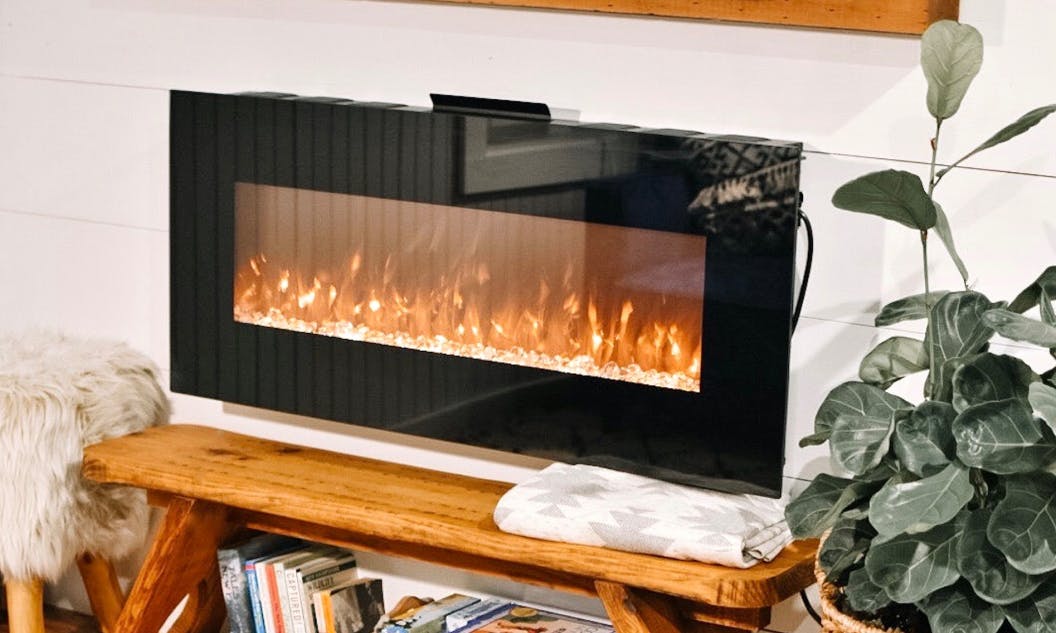
How to fight indoor air pollution?
Having become aware of the pollutants present in our environments and their danger, it is also right to be aware of how to get rid of them.
In fact, there are small gestures that can make a huge difference, which guarantee us a high probability of minimizing the possibility of inhaling these dangerous pollutants.
Air your house often
Opening the window to facilitate air exchange is essential for having fresh and clean air in your home. In this way, the renewed air flow will reduce the concentration of pollutants, reducing the risk of inhaling them.
It is recommended to ventilate the house twice a day and keep the windows open during the periods where the climate allows it, even throughout the day.
This little tip also allows you not to have stagnant air and thus avoid bad smells.
Clean and keep fireplaces and stoves ventilated
Maintaining a good cleaning of the home fireplace or any wood stoves is essential to contain the spread of carbon monoxide and carbon dioxide in the home.
Clean them frequently and make sure they are well-ventilated for cleaner and healthier air, without having to give up the heat they give off.
Do not smoke inside your home
It is known that smoking hurts.
To reduce damage, always smoke outside the house, so that cigarette smoke does not remain in the air.
The best choice is obviously to quit smoking, because it is harmful to oneself and to others.
Use an air purifier
Air purifiers are a perfect solution to eliminate these pollutants and also various other substances present in the indoor air. They are designed to make your indoor air free from pollutants and harmful substances, thanks to their filtering system. There are different types of air purifiers on the market, and each works differently.
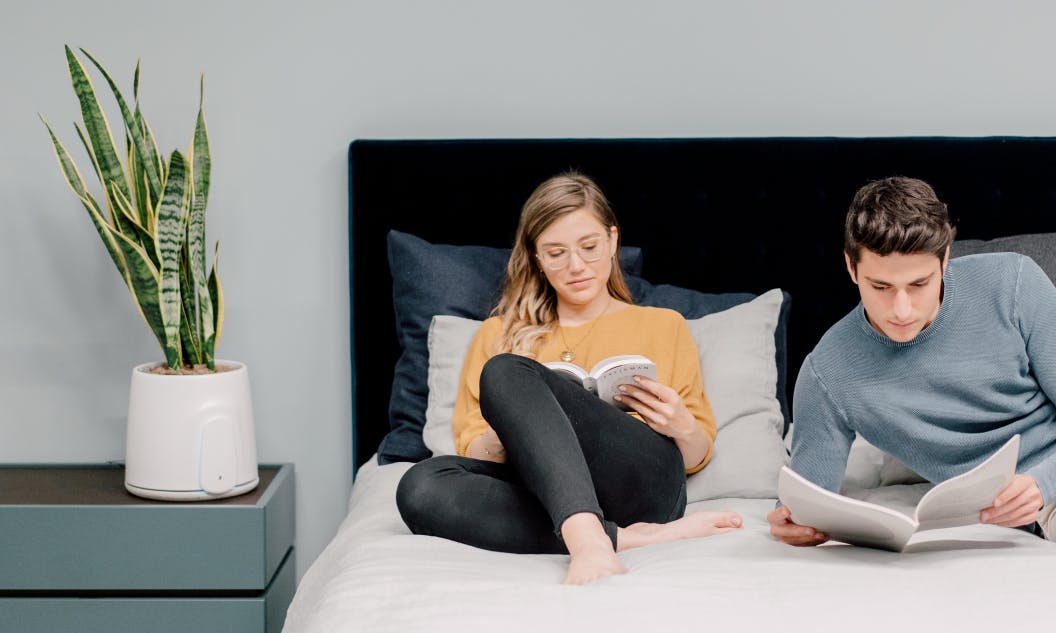
Air purifier: what is it and how does it work?
A solution to permanently guarantee a healthy indoor environment with clean air is undoubtedly the use of air purifiers.
Air purifiers are devices that collect the air from the house and convey it to their internal filter, to return it to the outside free of impurities and pollutants that are harmful to humans.
Therefore, they represent the optimal solution to eliminate pollutants from your internal spaces because they allow you to obtain an environment that is constantly free of toxic agents, thus reducing the probability of the onset of mild and severe symptoms.
Having analyzed the problem of indoor air pollution, a person rightly asks: ok, but how do air purifiers work? Among the many types on the market, which air purifier should I choose?
There are different solutions on the market and each has its own characteristics. They differ in price, filter, size, purifying capacity and their effectiveness on certain categories of pollutants.
The most famous and effective alternatives are HEPA purifiers and PCO purifiers.
Natede Smart: the natural air purifier
Vitesy has chosen to exploit PCO technology because it is considered the most cutting-edge and eco-sustainable alternative on the market.
In fact, the solution we propose is called Natede Smart: an IoT air purifier capable of combining 3 extraordinary principles such as Nature, Technology and Design in a single device.
NASA research
The creation of our Natede Smart started from a NASA study, according to which some types of plants are able to purify the air thanks to their growing substrate.
In Natede Smart technology, this phytoremediation power of plants is enhanced by the PCO system, that is, thanks to the photocatalysis process.
Photocatalysis differs from competitors because it provides a filter that does not block pollutants, but rather eliminates them. Thanks to a particular chemical reaction that occurs between the action of the LEDs and the tungsten trioxide that covers the ceramic filter, it is possible to obtain extraordinary results by eliminating:
- Virus
- Bacteria
- VOC (volatile organic compounds)
- Fine particulate
- Odors
Furthermore, this type of photocatalytic filter is perennial, meaning that it does not need to be replaced, but simply rinsed under water 1 or 2 times a year.
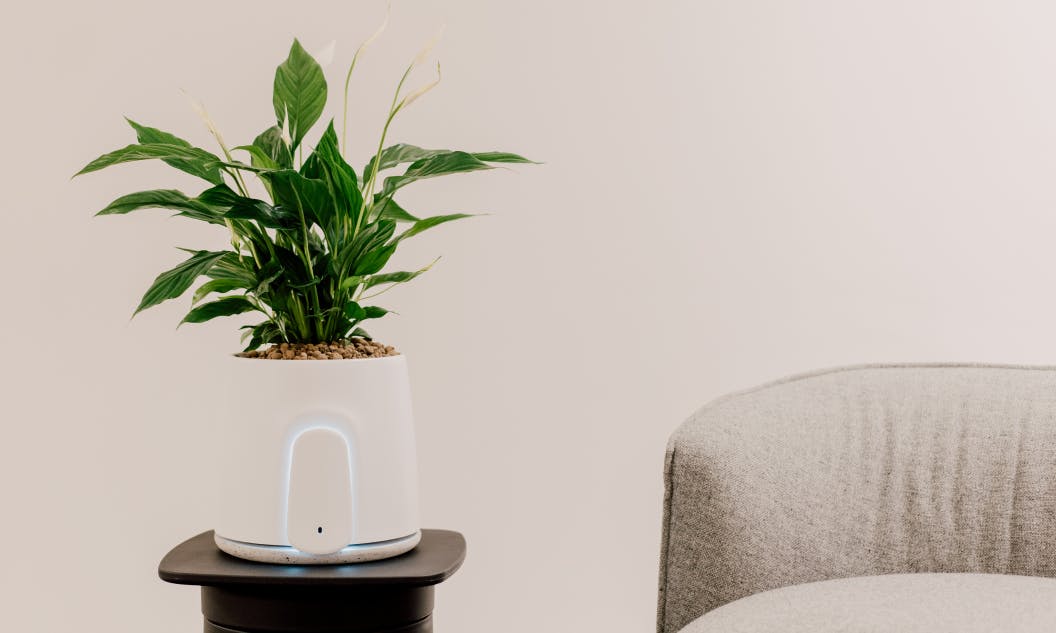
Natede Smart: much more than an air purifier
We therefore understood that having an air purifier at home allows us to make our air much healthier and safer.
Unfortunately, it is very difficult to realize the level of pollutants and it is often very complicated to perceive with our breath how qualitatively our air is valid.
For this reason, Natede Smart, in addition to being an elegant plant based air purifier, is also equipped with an air monitoring system, which allows, through its Vitesy Hub app, to check the values of:
- Temperature
- Humidity
- VOC (volatile organic compounds)
- Fine Particulate
- CO2 (carbon dioxide)
Thus allowing people to be more aware of the quality of their indoor air, in order to have a healthier lifestyle and attentive to their breathing.
The safety and healthiness of your air is a factor that allows you to live a much more peaceful life and to fully enjoy our interior spaces, without the thought of breathing pollutants that can be harmful to our health.
Do you also want to discover a new way of breathing in your home? Get Natede Smart now to enjoy the benefits of clean, light and safe air. If you breathe better, you live better!

